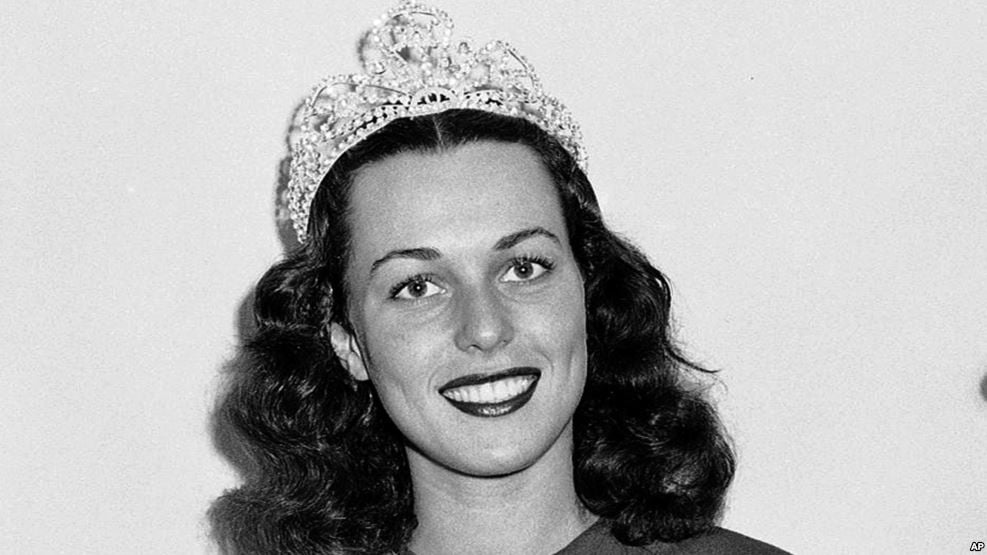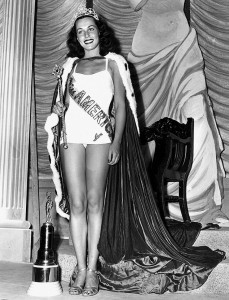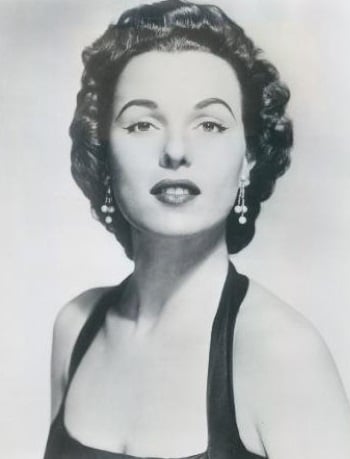Blog Archive
The One and Only Jewish Miss America
On August 15, 1945, seventy-one years ago yesterday, Bess Myerson became the most beautiful woman in America. Myerson became the first postwar Miss America, winning the same year the beauty pageant started offering its scholarship program. And she was the first ever Jewish Miss America.
She was also the last ever Jewish Miss America.
Born in 1924 to Russian Jewish immigrants, Myerson was raised in New York City to appreciate Yiddish culture and art. At her mother’s insistence, she became highly skilled at the piano. By the time she was 12 years old, she stood at 5’10″ tall. Myerson never felt comfortable in her own skin, and though she initially had no intention of participating in the Miss New York City contest, she was entered by her sister and her friend without her knowledge.
Myerson described herself as “the wrong person in the wrong place” when she competed wearing a borrowed bathing suit. She was more interested in the scholarship money than in the competition itself. She still won advancing to the Miss America pageant.
One of the defining moments in Myerson’s career as a public figure occurred before she was ever even crowned Miss America. The director of the pageant had pulled her aside and told her she had a real chance of winning, but suggested she change her last name to something more “attractive.” What he meant was “less Jewish.”
In the 1987 book by Susan Dworkin titled Miss America, 1945: Bess Myerson’s Own Story, Myerson described the decision to ignore that advice as one of the most important she ever made.
“Already I was losing my sense of who I was; already I was in a masquerade, marching across stages in bathing suits,” she said. “Whatever was left of myself in this game, I had to keep, I sensed that. I knew I had to keep my name.”
Myerson’s coronation as Miss America took place just days after Japan’s surrender and the end of World War II. Back then, the role of beauty queen still held huge cultural significance. During the war, the Miss America pageant had gone through a kind of rebranding. The country needed to be united in the fight against the enemy, and Miss America became a valued national icon. She was a beautiful patriotic symbol to sell war bonds and bolster the American spirit, both at home and overseas. In a time of overwhelming hardships, who wore the crown bore great significance.
What made Myerson’s reign particularly significant was it came at one of most important times in all of Jewish history. Towards the end of 1945, once the war was won, everyone was discovering just how deep the atrocities against the Jewish people ran. All Jews — from the European refugees directly affected to the American Jews being blamed by Anti-Semites for causing the war — were just starting to come to terms with the sheer magnitude of loss. Jews at the time were also dealing with logistical questions of what to do next, where to go, and how do I keep my faith when something like this happens.
The image of the Jewish body in this time began to take on a horrifying shape. It’s a picture that persists to this day when people think of a Jew during World War II — the image of a starved body: gaunt, hollowed, abused. Dead or dying, with little to indicate the difference. For many Jewish Americans post-World War II, Myerson’s win as Miss America gave the world a different view of the Jewish body — beautiful, gifted, and full of hope.
Her year as Miss America, however, started off pretty rocky. Touring the country on the vaudeville circuit was unsatisfying — the crowds were more interested in her bathing suit than her musical talents. She faced anti-Semitism from all corners: businesses refused to offer her sponsorships as was customary for pageant winners, she was denied entrance to many places, and encountered open hostility for being a Jew.
She was approached by the Anti-Defamation League to speak on bigotry and tolerance around the country. She spent her year as Miss America speaking at high schools and housing projects with a speech titled “You Can’t Be Beautiful and Hate”, saying, “…hate is a corroding disease and affects the way you look. … You can’t hide it – ever. It shows in your eyes. It warps your expression.”
It was on this lecture tour where she was discovered by a television producer who launched her career as a TV personality and later as the commissioner of New York City’s Department of Consumer Affairs. Throughout her long career she always presented herself as a Jewish public figure, and later in life donated much of her money to charities, including over a million dollars to the Museum of Jewish Heritage: A Living Memorial to the Holocaust. She died on December 14, 2015.
Myerson was a vital part of the Jewish American story, simultaneously changing and being affected by the discourse surrounding the Jewish community in the tumultuous post-War era. The current Anti-Defamation League national director Abraham H. Foxman spoke of how integral she was to the narrative, calling Myerson a “treasure trove” to the ADL’s goal.
“Miss America was a much bigger thing back then than it is today, and she represented the promise of that contest and the reality that the country was still racist, anti-Semitic and bigoted,” Foxman said. “She had the guts and the courage to be a proud Jew and to stand up for it.”
- Post by Gemma Solomons, Marketing & Communications Coordinator at the Lower East Side Tenement Museum


